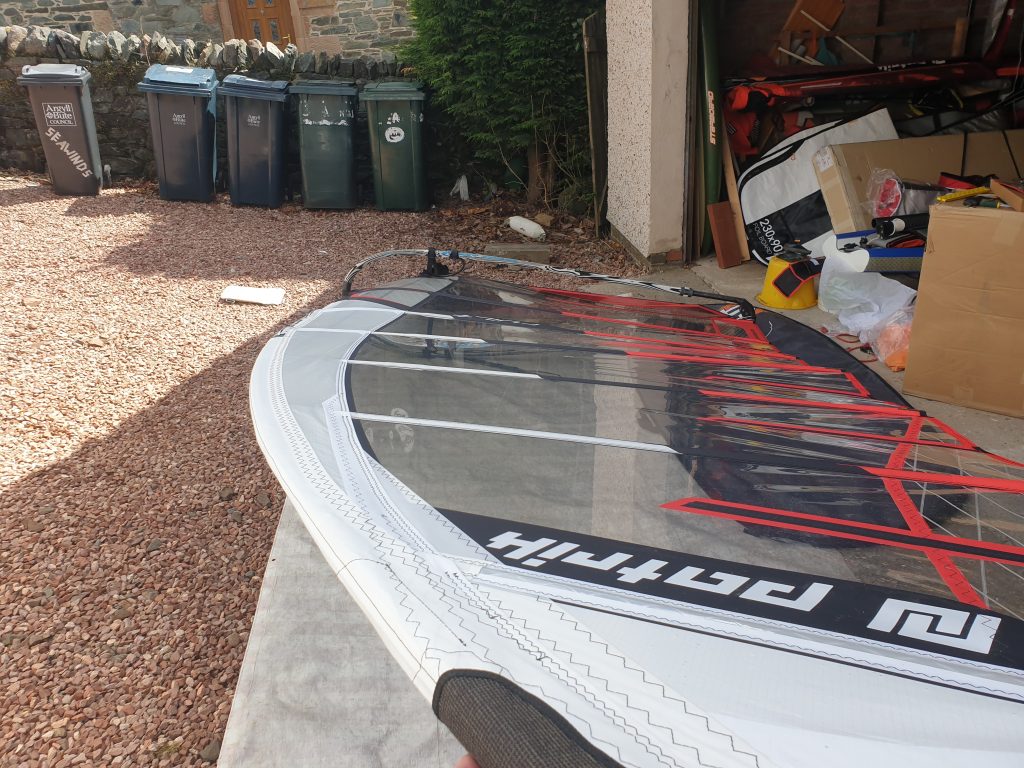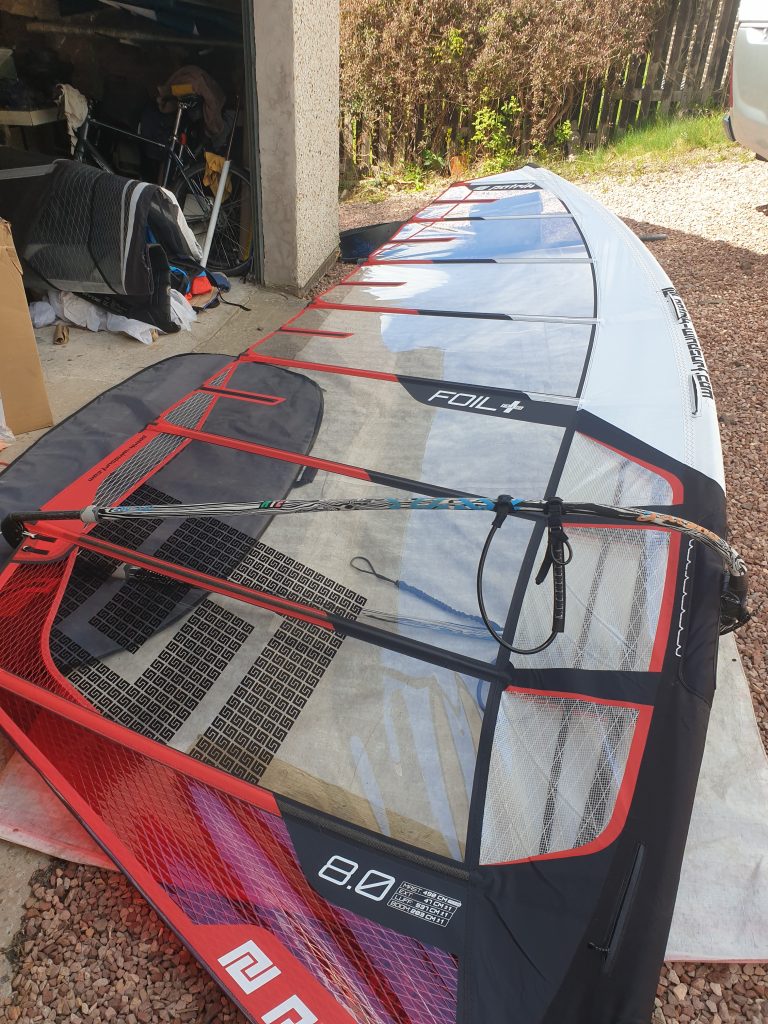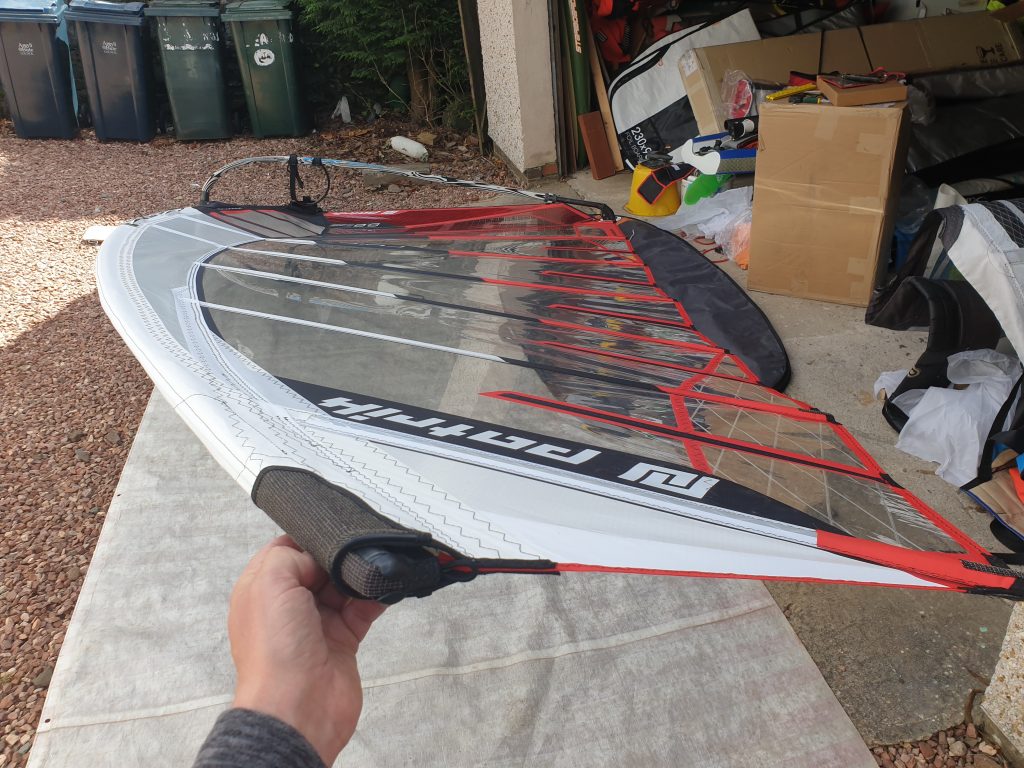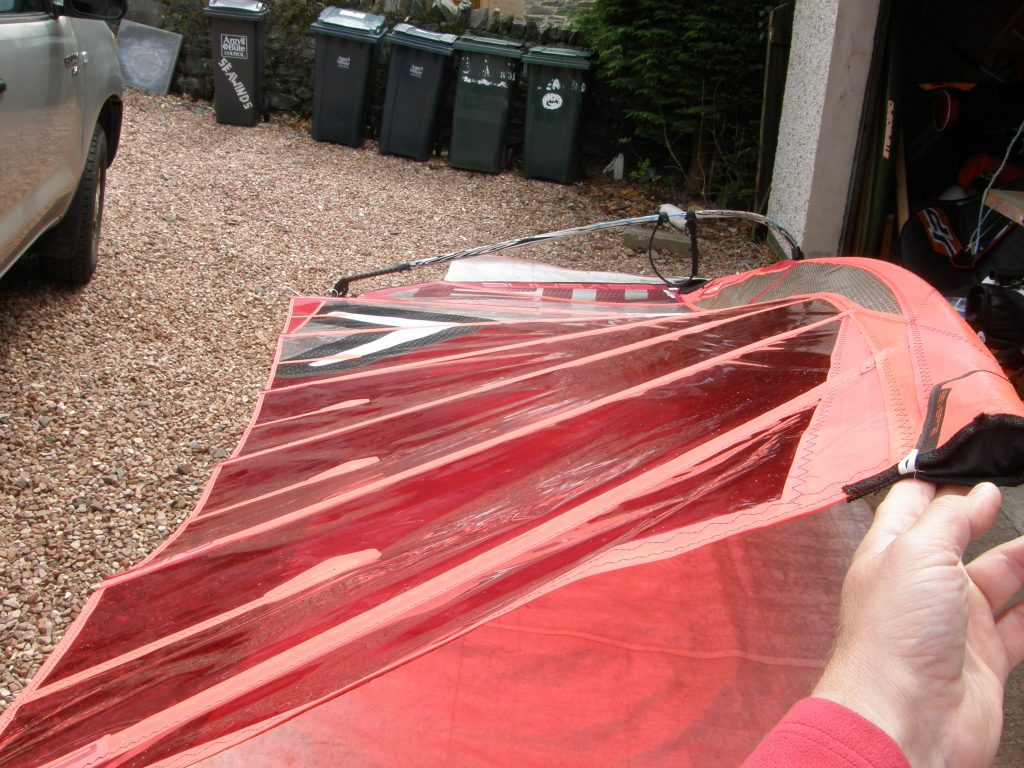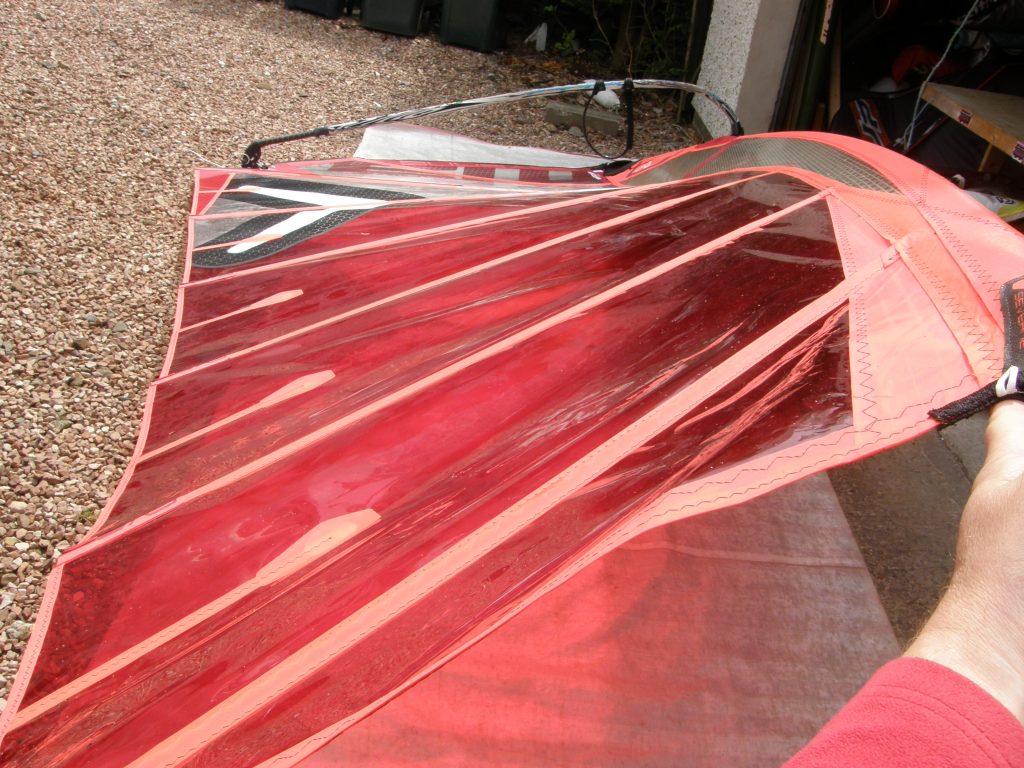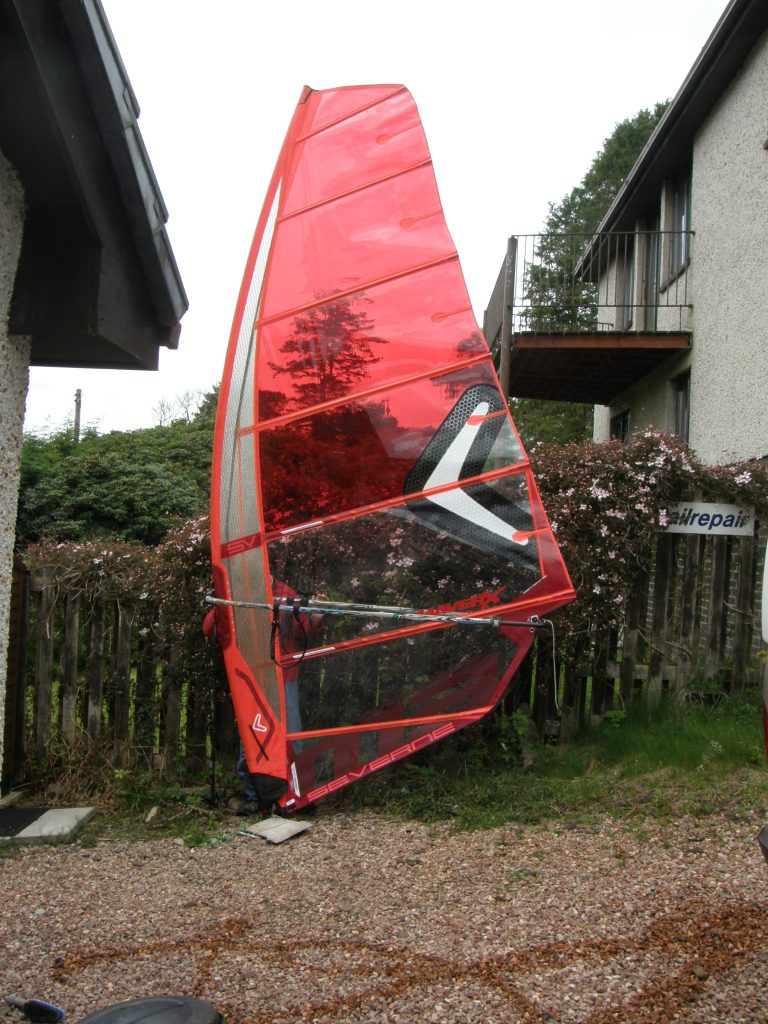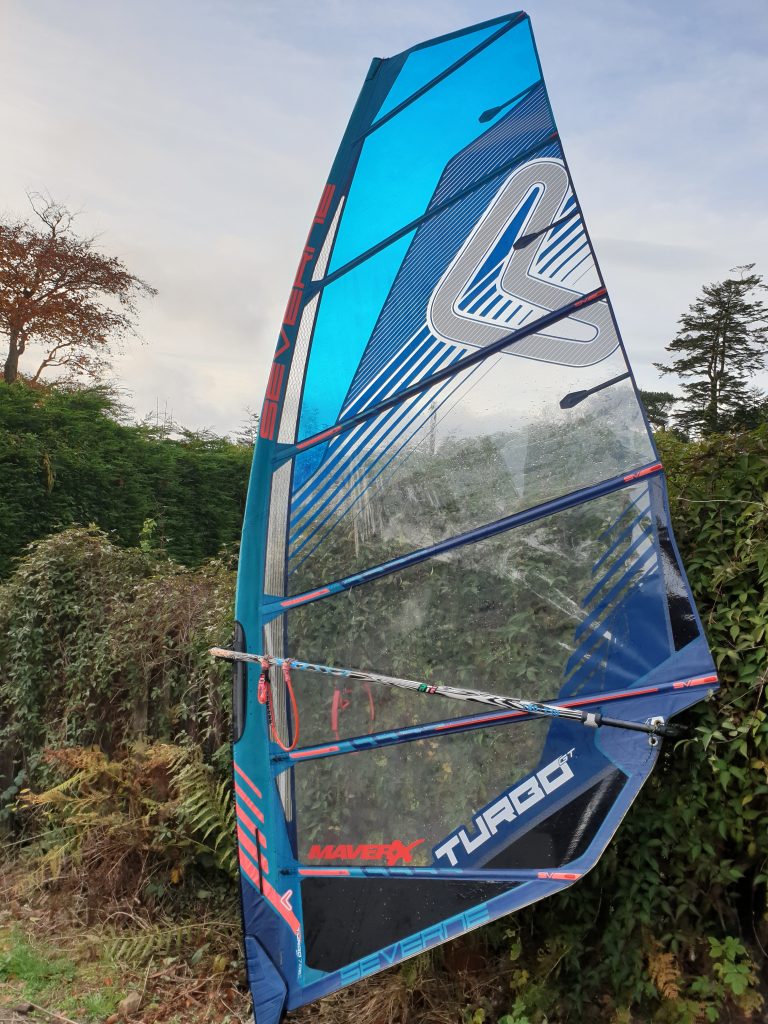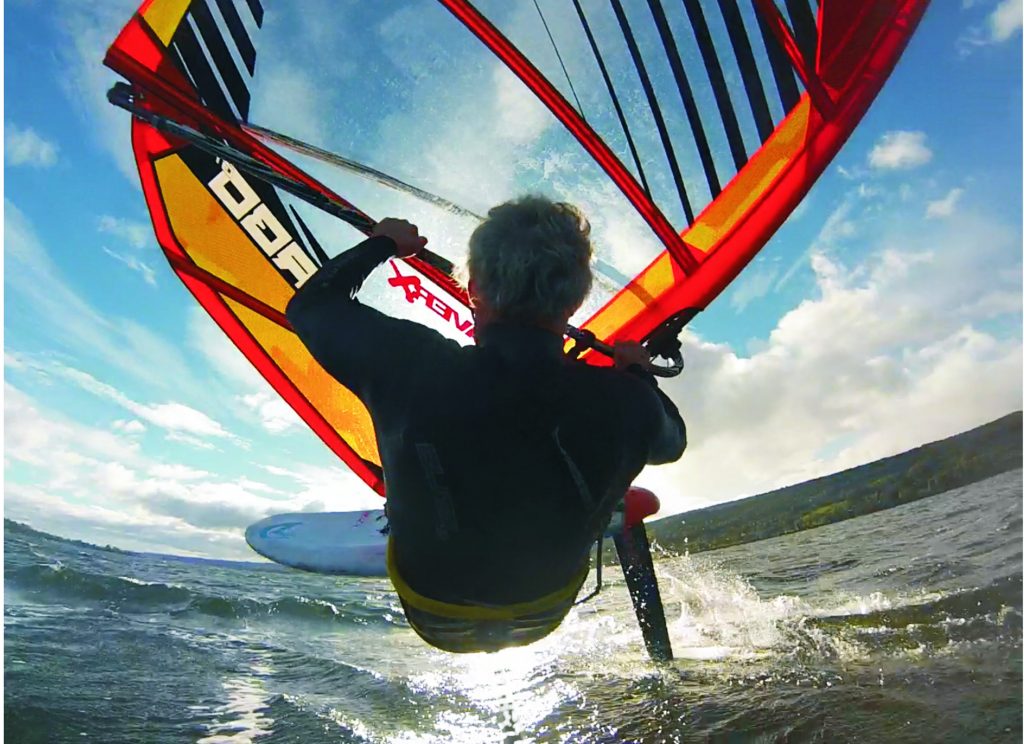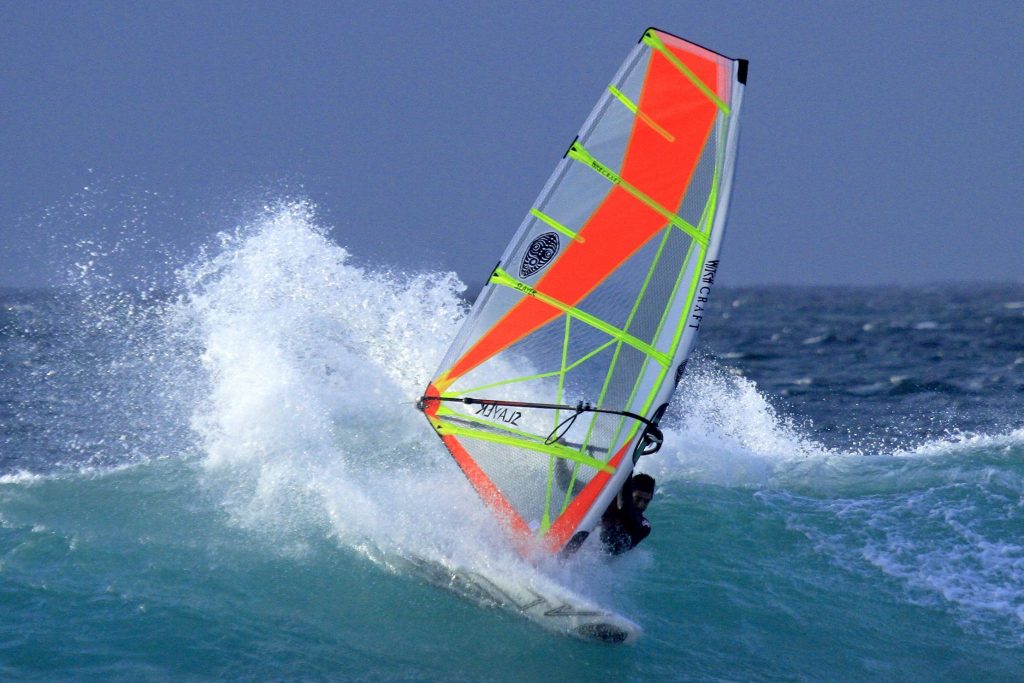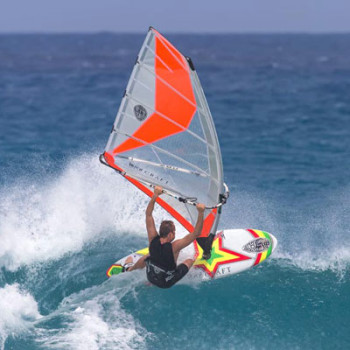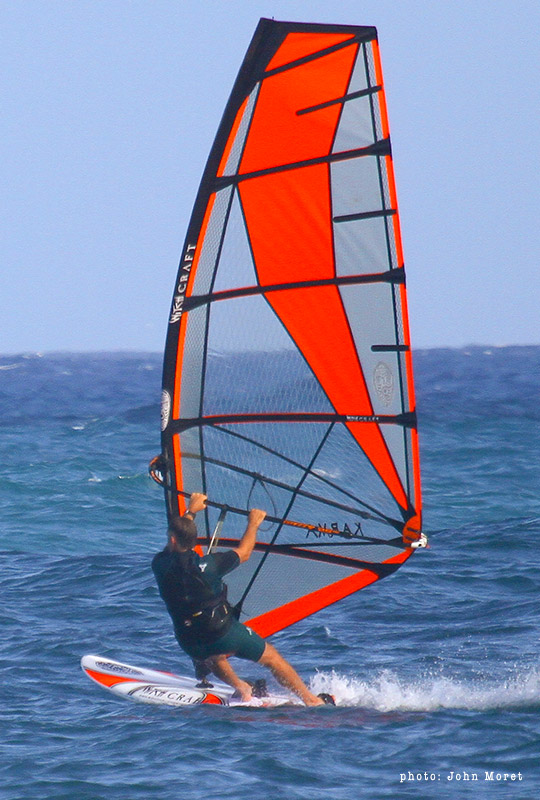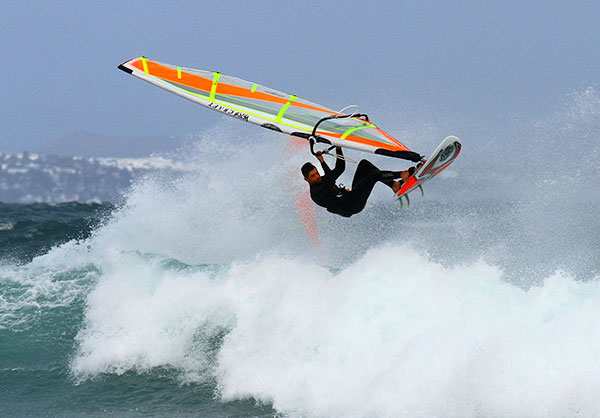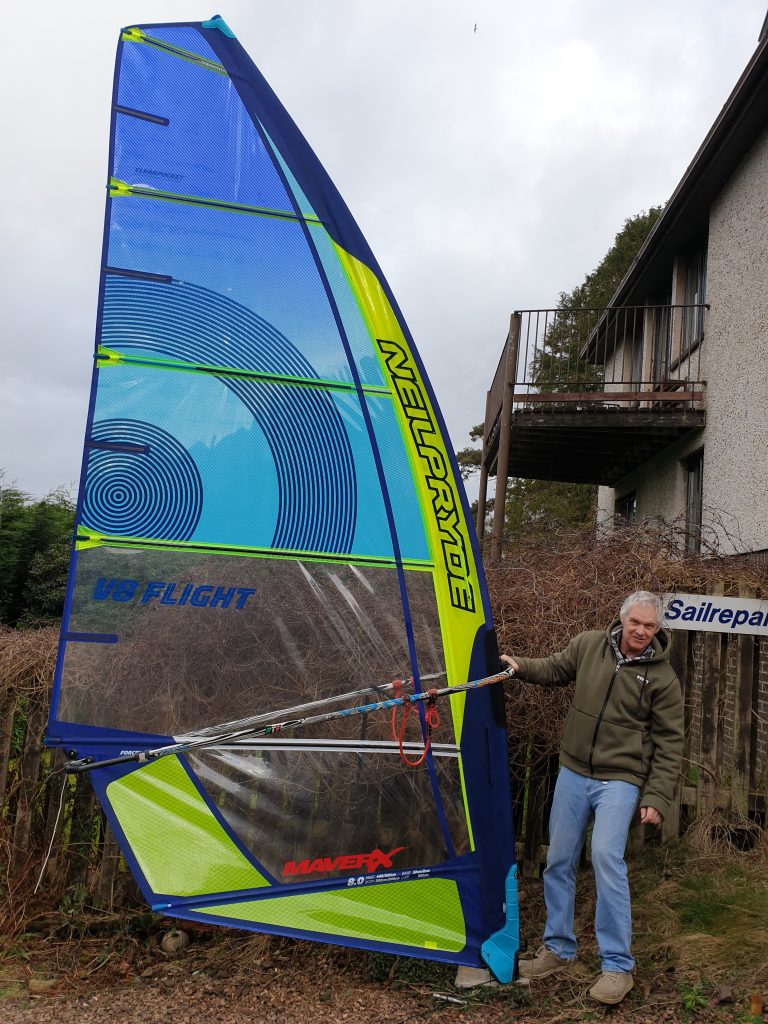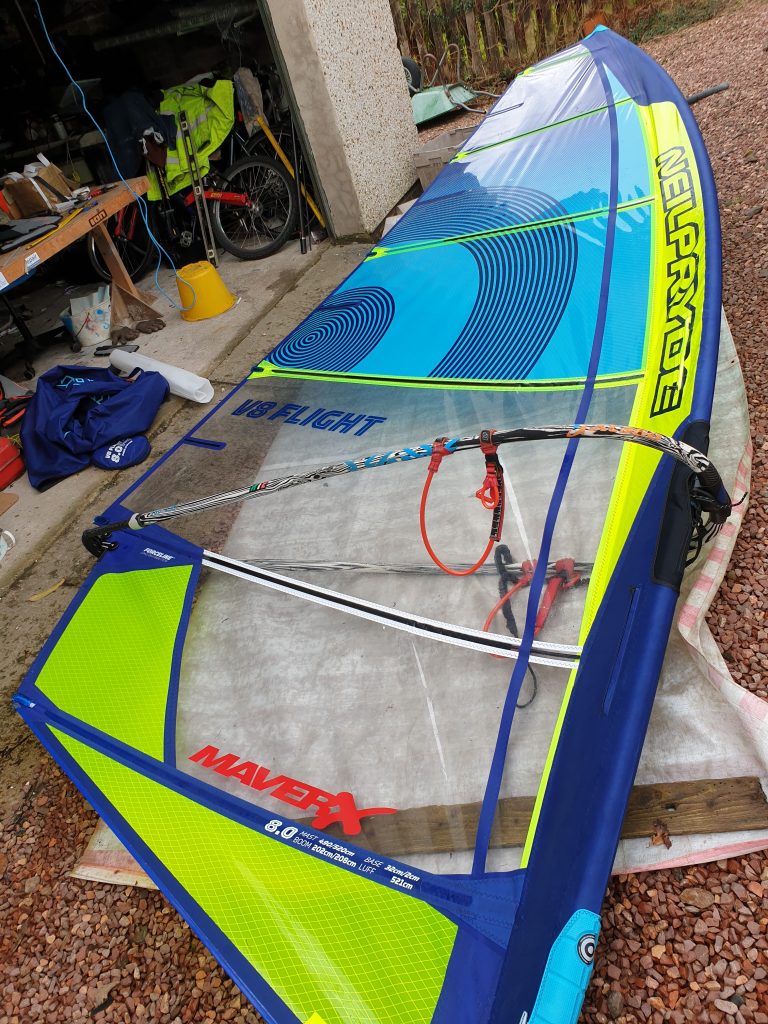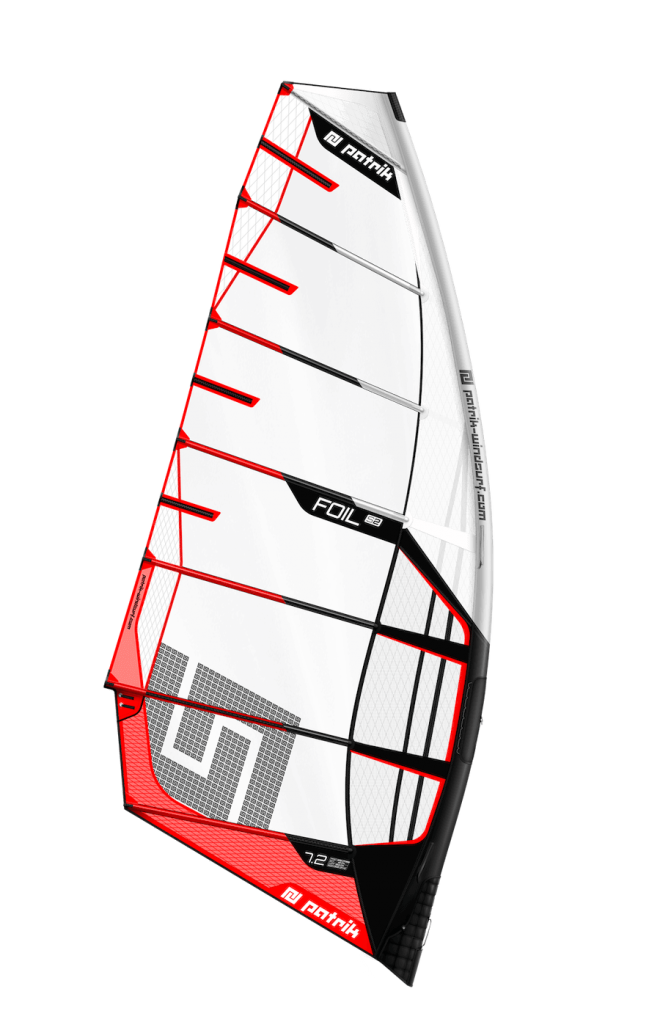
First impressions – These sails are made for PWA level competitive wind foiling. 7 battens and 4 cams create a solid wing like structure. The sails set with a taught crease free skin. The sails are quite flat in profile, these sails are all about efficiency, cutting through the air with as little drag as possible. The leech is moderately tight but with some softness, the head does not fall away like a slalom race sail. These sails are high aspect requiring long masts but relatively short booms. Where there is a choice of which length mast to use I tend to prefer the shorter mast with a long extension. I rig the 8.4 on a 500 mast, the 7.8and 7.2 on a 480, the 6.6 on a rdm 460 and the 6.0 on a rdm 430.
The sails come with lots of cam spacers already fitted so be prepared to take your time getting the sails to rig and rotate as you want.
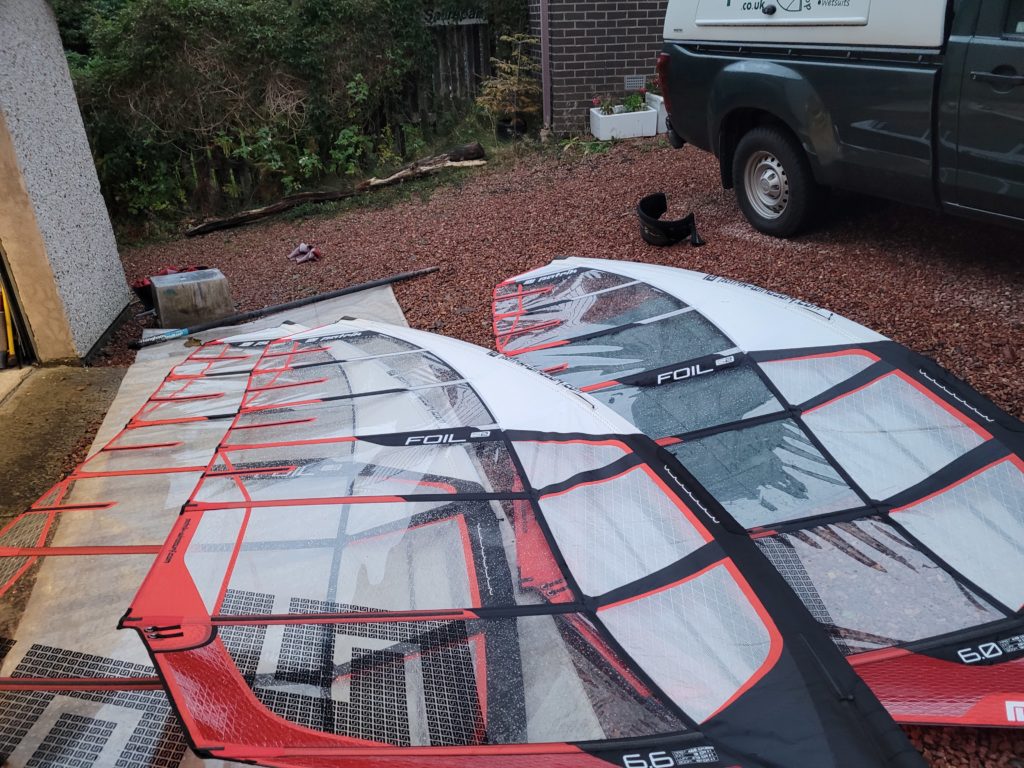
On the water –
Uphauling – fairly standard compared to other sails of the same size. Water starting is a bit easier due to a combination of the high aspect nature of the sail providing plenty of lift combines with easy rotation to help flick the sail if required.
Getting going – these sails are very efficient, they cut through the air with ease feeling light in the hands. When a gust comes along the rig wants to accelerate and keep accelerating. In very light winds other sails with more draft/shape in the sail body will pump up onto the foil but if there is insufficient power to level off the flight you can soon find yourself dropping back off the foil. With the S2 the sail will be eager to accelerate meaning you can quickly level off the flight and start to accelerate. This feature of the sails means they work best with efficient high aspect race style foils. A low aspect high lift foil would not be able to keep up.
Once in flight the sails will settle down and allow you to concentrate on cutting through the wind. In gusty overpowering conditions the sail’s slippery nature allows it to cut through the gusts without any drama. That same feature allows you to keep foiling into stronger winds and it is only with hindsight do you think “actually, I could have been using a much smaller sail.” It tends to be time to change down sail when you run out of courage as opposed to control.
One of the things that differentiates good foil specific sails from their slalom counterparts is that in gusty winds the sails fly level with ease. With slalom sails part of their design is that they apply mast foot pressure during gusts to help pin the slalom board to the water and retain control. So if you use a slalom sail for foiling it may seem a good idea to keep the board down during hard gusts but what you find is when flying along powered up and you hit a hole in the wind the board is likely to come right up which is far from ideal. this is something that becomes more noticeable after using the S2 sails as they fly level through severe gusts and holes.
Gybing – The sails enter the carve with ease. You can vary the drive through the turn with opening or closing the sail. The most effective technique when powered up is to enter the gybe with the sail somewhat laid down and in effect hidden from the wind and then quickly bring it up and to the outside of the turn so that you have no problems with the apparent wind as you will find yourself gybing faster than the wind. Rotation – The sails rotate with a solid thud powering you out of the gybe.
Overall –
Who are they for? – Anyone racing or thinking of foil racing but also and probably more importantly anyone who enjoys that super efficient feeling. Are the Patrik S2 sails suitable for you? If you aren’t falling in often and don’t have to launch through a shore break these sails will take your foiling to the next level.


